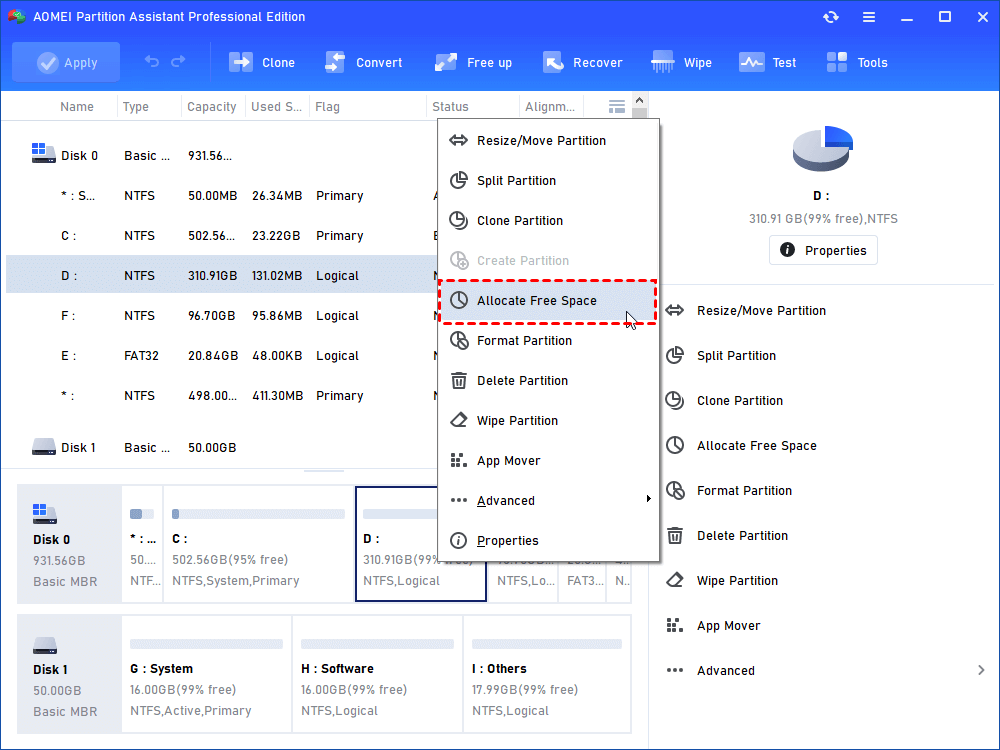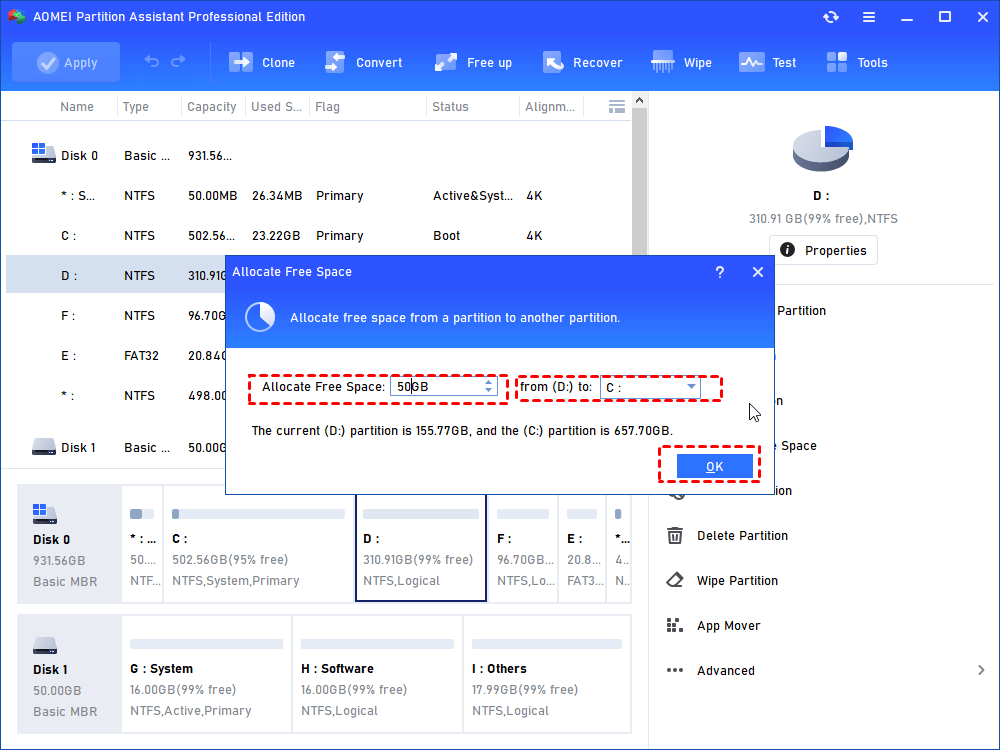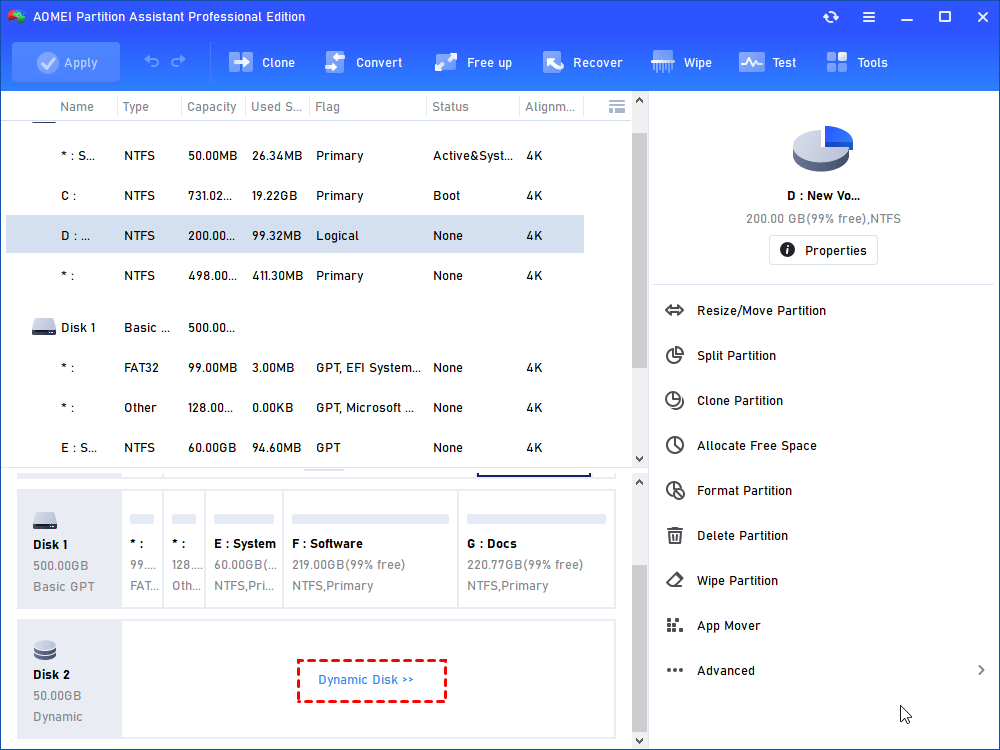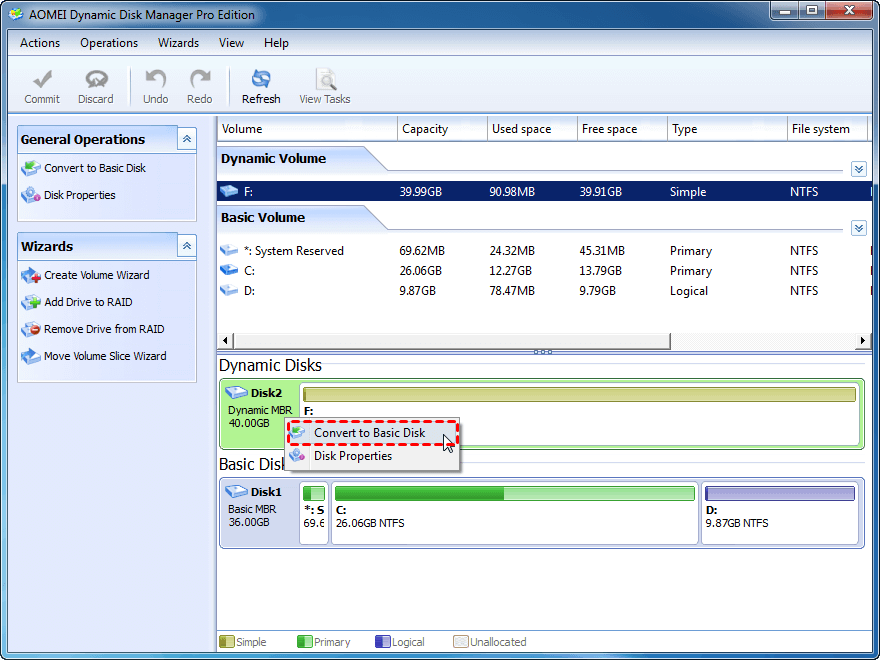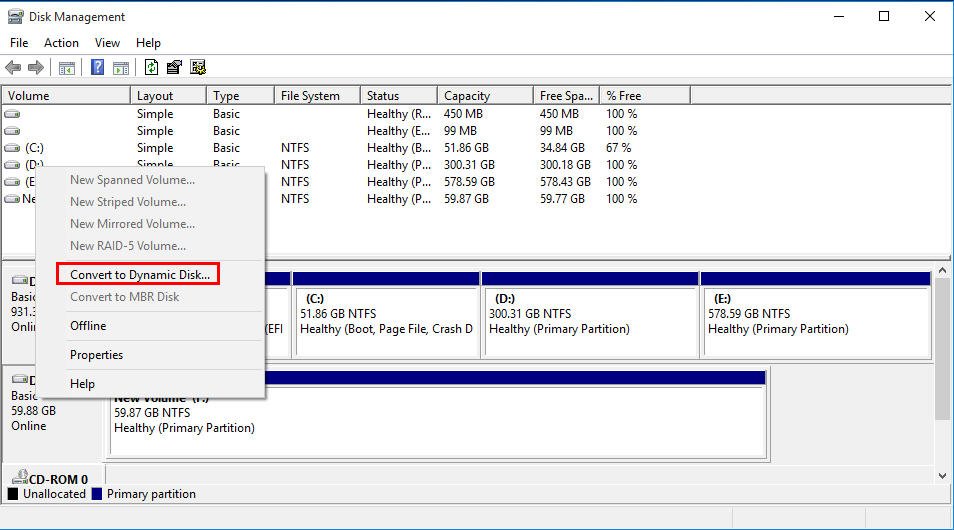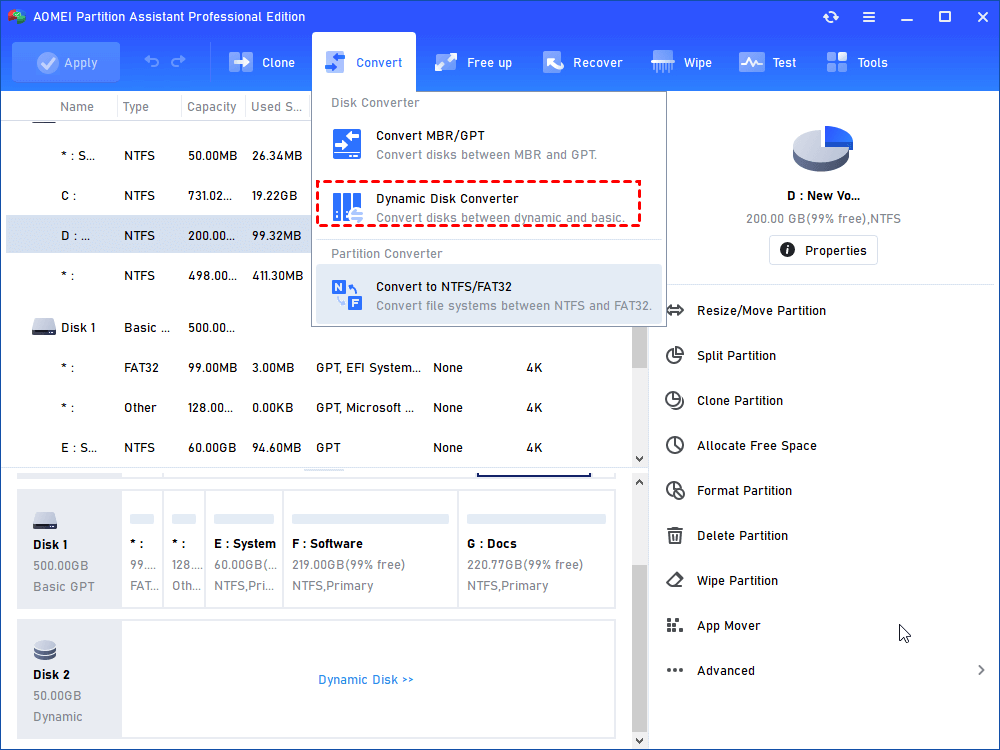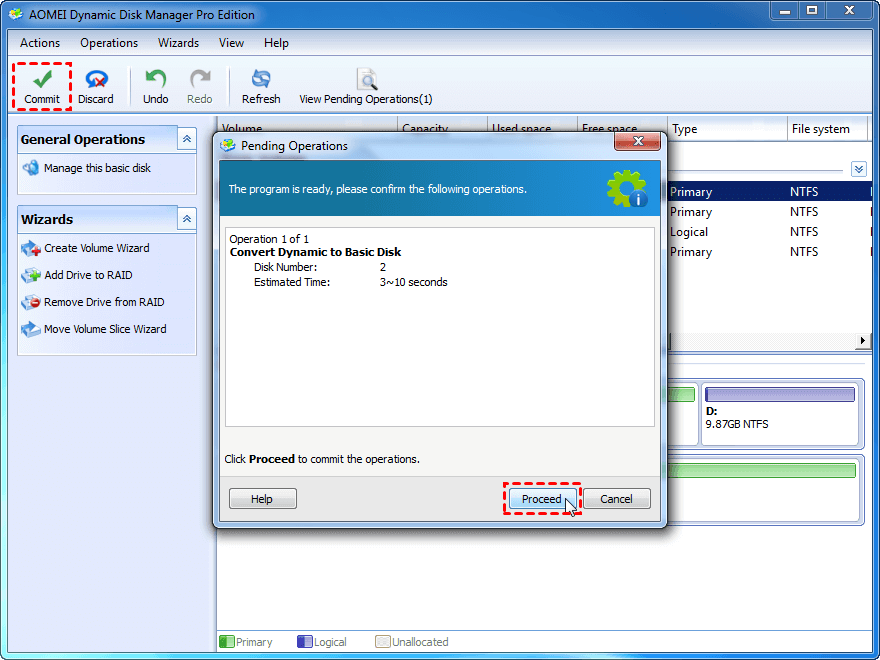Easily Manage Basic and Dynamic Disk via a Great Disk Manager
To manage basic and dynamic disk or convert dynamic into basic without data loss, you can use a powerful disk manager, AOMEI Partition Assistant Professional.
Basic disk VS dynamic disk
Basic disk and dynamic disk are two kinds of storage type. Both of them support GPT and MBR disk. But they differ in many aspects:
-
Basic and dynamic disk employ different ways to track information: basic disk use partition table while dynamic disk uses LDM (Logical Disk Manager) or virtual disk service.
-
Basic disk can hold primary partition, extended partition, logical partition while dynamic disk can contain simple volume, spanned volume, striped volume, mirrored volume, and RAID-5 volume.
-
Basic disk can be supported by all Windows OSes from MS-DOS to Windows Server 2019 while dynamic disk can be used in Windows Server OSes, Windows 10/8.1/8/7, XP and Windows 2000.
-
You can own dual-boot or multi-boot environment on basic disk and dynamic disk doesn’t support dual or multi-boot environment.
★ About different kinds of volume in dynamic disk
▪ Simple volume: It likes the primary partition in basic disk.
▪ Spanned volume: It allows you to combine multiple unallocated spaces go across different physical disks.
▪ Striped volume: It can improve read-write performance as it distributes I/O requests among disks.
▪ Mirrored volume: It can create a copy of data in a mirrored volume to protect data.
▪ RAID-5 volume: RAID 5 is a redundant array of independent disks that uses disk striping with parity.
After realizing the differences between basic and dynamic disk and deciding which one to choose, let’s go into how to manage basic and dynamic disk.
Employ a professional basic and dynamic disk manager
To help you manage basic disk and dynamic disk flexibly and conveniently, here introduce an easy-to-use and user-friendly disk manager software for Windows 10, 8.1, 8, 7, XP and Vista, AOMEI Partition Assistant Professional.
Note: You can download the demo version of AOMEI Partition Assistant Professional to have a try!
✔ To manage basic disk:
For basic disk, the software allows you to resize, split, move partition, copy partition and so on. Here will demonstrate how to extend a partition through allocating free space directly from another partition, when there is no unallocated space behind it.
Step 1. Install and run the software. Right-click the partition that has enough free space (here is partition D:) and choose Allocate free space.
Step 2. Input the size of free space you want to add to the destination partition (here is partition C:) and click OK.
Step 3. You’ll be back to the main interface. Click Apply and Proceed to commit the operation.
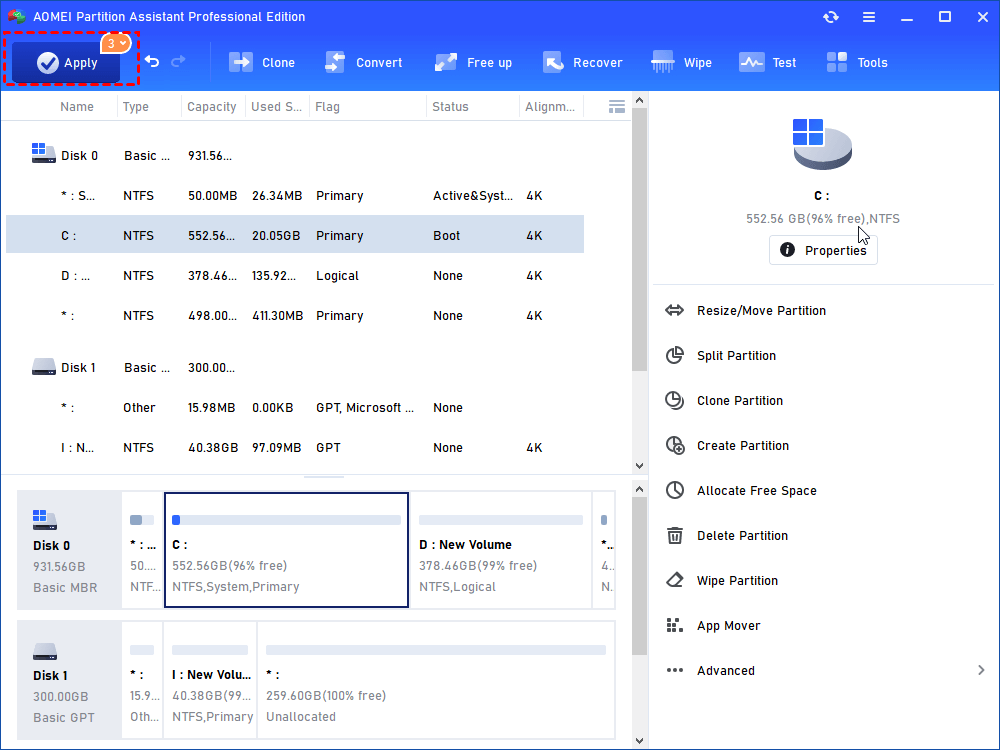
Notes:
-
This function is helpful in fixing Low Disk Space warning.
-
If there is unallocated space on the same basic disk but not contiguously behind the partition that you want to extend, you can add the unallocated space to the partition via Merge Partition function.
✔ To manage dynamic disk
For dynamic disk, the basic and dynamic disk manager software can resize dynamic volume, move volume slice, delete dynamic partition, add drive to raid 5 directly, remove drive from raid 5, etc. To complete these tasks, run AOMEI Partition Assistant Profesional, click the dynamic disk and choose Dynamic Disk Manager.
And you can see the following screenshot. Then, you can click the corresponding button to execute specific operations afromentieond.
Make conversion between basic and dynamic disk without data loss
Now, you should have known about how to manage basic and dynamic disk. If you are using basic disk and want to enjoy advantages of dynamic disks, you can convert basic disk into dynamic by following these steps:
Step 1. Press Windows + R, input “diskmgmt.msc” and press OK to open Disk Management.
Step 2. Right-click the basic disk that you want to convert, choose “Convert to Dynamic Disk”.
Step 3. Check whether it is the disk that you need to convert. If it is, click OK to continue.
Step 4. Click Convert and you’ll receive a message that tells what happens after the disk is converted to dynamic. Click Yes button.
If you are using dynamic disk but encounter issues like dynamic disk invalid, you may want to convert it back to basic. But when you right-click it in Disk Management, you’ll find that Convert to Basic greyed out. Here it’s advised to use the software aforementioned, AOMEI Partition Assistant Professional to convert dynamic disk into basic without deleting partitions as follows:
Step 1. Run AOMEI Partition Assistant Professional. On the home interface, click the target disk and choose Dynamic Disk Converter.
Step 2. Select Convert a dynamic disk back to basic disk and click Next.
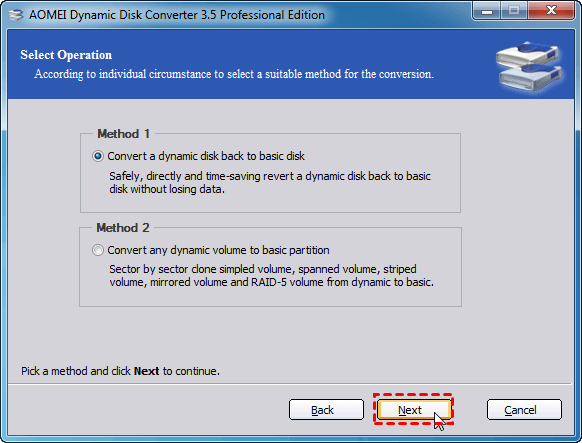
Step 3. Choose the dynamic disk in the list. If the selected disk contains mirrored volumes, you need to check the option before clicking Next.
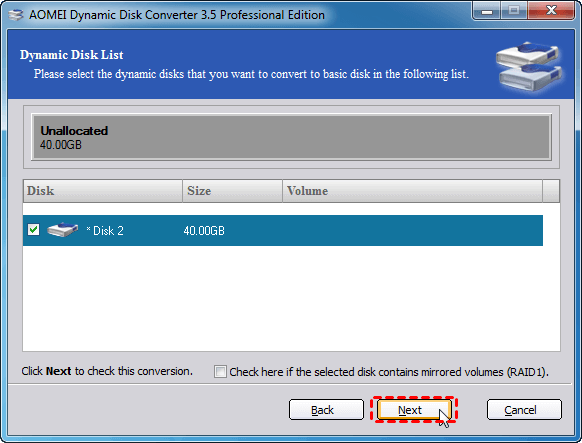
Step 4. Click Commit and Proceed button to execute the conversion.
☞ Note: If you are using Windows Server 2019, 2016, 2012 (R2), 2008 (R2) or 2003, you can employ the software’s Server edition to manage basic and dynamic disk.
